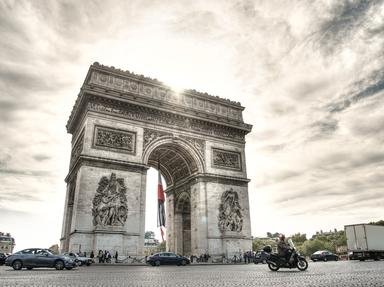Quiz Answer Key and Fun Facts
1. Fonty snail realises that the diary is full of bits relating to his snail comrades and the famous Frenchmen their ancestors claim to have met. "Look at this Mari," says Fonty snail "here's a bit about an ancestor of yours. La Jeanne blonde was invited to attend the coronation of the first Frenchman to become king of Sweden in 1818."
Who was the first Frenchman to become King of Sweden?
2. "Hey, Skumma!" said Fonty snail. "There's one of your ancestors here - Francie Ferret."
"Oh, I've heard of her!" replies skumma.
"Well it says here" continued Fonty snail "she remembers a shop, Shakespeare and Co, printing the first edition of a most important literary work on February 2nd 1922, but I can't make out the name of it."
What was the title of this work?
3. "Well, here's something that might interest you, Mari" said Fonty snail. "William, Duke of Normandy was the first Norman king of England after he invaded in 1066, but it says here the Normans were originally from- drat!, it's too smudged to read!"
Where did the first Normans originate?
4. Skumma takes the diary from Fonty and flips through a few pages. "Oh look, Hound" she cries, "one of your relatives was the first snail to wear the bikini!" She must have been friends with the Frenchman/men that came up with the name bikini, but I can't quite make out their name(s)."
Who were the First Frenchman/men to invent and name the modern version of the two piece swimwear?
5. "Here's another interesting snippet of information" says Skumma snail as she leafs through the diary. "Apparently my great great uncle met Pierre de Coubertin who was the founder of --------".
What did Pierre de Coubertin found?
6. "Can I see the diary?" asks Mari snail. "It says here that Louis-Antoine, Comte de Bougainville, was the first Frenchman to - oh! no this bit is smudged too".
Louis-Antoine, Comte de Bougainville was the first Frenchman to do what?
7. "Well I never!" exclaimed Moist snail who has quietly taken the diary from Mari snail, "It says here that the fried potato was another first for the France. It must be true, because it's called a French fry." "No hang on" said rvallejo001 snail "I'm not sure it says France."
Which country claims to have invented the first French fry?
8. Julie snail has taken the diary from Moist snail. "Hey, you lot, listen to this", she says "I had an ancestor known as wallphoto Julie and she claims to have met Louis- Jacques-Mandè Daguerre." In 1839 the members of the French Academie des Sciences were shown an invention developed by Louis-Jacques-Mandè Daguerre that would forever change visual representation.
What was this French first?
9. "Look at this!" Redviking snail exclaims. "I thought it was the British that first translated the Rosetta stone, but it says here that Thomas Young only translated the demotic text and it was a Frenchman called - Oh no, not again! I can't read the name."
Which Frenchman completed the first translation of the Rosetta Stone?
10. Fonty snail takes back the diary and smiles contentedly at the memories it has brought back for the snails, but what a shame so much is missing. Almost like a blind man he thinks until ... "Drat, I can't remember his name" says Fonty snail out loud.
Which blind Frenchman was the first to develop a system that helped the blind and visually impaired to read and write?
Source: Author
fontenilles
This quiz was reviewed by FunTrivia editor
bloomsby before going online.
Any errors found in FunTrivia content are routinely corrected through our feedback system.
